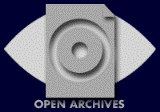Bidirectional Long Short-Term Memory untuk Ekstraksi Informasi pada Struk Belanja
 ), Moh. Ali Romli(2),
), Moh. Ali Romli(2), (1) Universitas Teknologi Yogyakarta
(2) Universitas Teknologi Yogyakarta
 Corresponding Author
Corresponding Author
DOI : https://doi.org/10.24036/voteteknika.v12i4.130990
Full Text:
 Language : id
Language : id
Abstract
Struk belanja merupakan dokumen bukti yang diperoleh setelah melakukan transaksi pembelian. Struk belanja mengandung informasi penting yang berguna untuk pelacakan pengeluaran dan pelaporan keuangan. Namun, proses pengambilan informasi dari struk secara manual cenderung rentan terhadap kesalahan dan memakan waktu. Penelitian ini bertujuan untuk menerapkan metode Bidirectional Long-Short Term Memory (Bi-LSTM) dalam ekstraksi informasi pada struk belanja. Bi-LSTM dipilih karena kemampuannya menangkap pola dalam teks tidak terstruktur melalui analisis sekuensial dari dua arah. Proses ekstraksi informasi dilakukan dalam beberapa tahapan, mulai dari pengumpulan data dari dataset CORD (Consolidated Receipt Dataset for Post-OCR Parsing) dan foto struk belanja yang diambil dengan ponsel. Tahapan berikutnya meliputi pemrosesan gambar (image preprocessing), ekstraksi teks menggunakan Optical Character Recognition (OCR), pemrosesan teks (text preprocessing), pelabelan, dan pembuatan model Bi-LSTM melalui tahap pelatihan, pengujian, serta evaluasi model dengan confusion matrix. Hasil penelitian menunjukkan bahwa model Bi-LSTM yang dikembangkan mencapai akurasi sebesar 95%, precision sebesar 95%, dan recall sebesar 95%. Penelitian ini diharapkan dapat berkontribusi dalam pengembangan teknologi otomatisasi yang lebih optimal untuk pengelolaan dan analisis data dari dokumen tidak terstruktur.
Kata kunci : Bi-LSTM, Ekstraksi Informasi, Struk Belanja, Literasi Keuangan.
Shopping receipt is a proof-of-purchase document received after a transaction. Receipts contain important information that is useful for tracking expenses and financial reporting. However, manually extracting information from receipts is prone to errors and time-consuming. This study aims to apply the Bidirectional Long-Short Term Memory (Bi-LSTM) method for information extraction from receipts. Bi-LSTM was chosen due to its ability to capture patterns in unstructured text through sequential analysis from both directions. The information extraction process involves several stages, starting with data collection from the CORD dataset (Consolidated Receipt Dataset for Post-OCR Parsing) and photos of receipts taken with a smartphone. The next steps include image preprocessing, text extraction using Optical Character Recognition (OCR), text preprocessing, labeling, and building the Bi-LSTM model through training, testing, and model evaluation using a confusion matrix. The results of the study show that the Bi-LSTM model developed achieved 95% accuracy, 95% precision, and 95% recall. This research is expected to contribute to the development of more optimal automation technology for the management and analysis of data from unstructured documents.
Keywords: Bi-LSTM, Information Extraction, Shopping Receipts, Financial Literacy.
References
T. Saout, F. Lardeux, and F. Saubion, “An Overview of Data Extraction From Invoices,” IEEE Access, vol. 12, pp. 19872–19886, 2024, doi: 10.1109/ACCESS.2024.3360528.
M. Ylisiurunen, “Extracting Semi-Structured Information from Receipts,” Master’s thesis, Aalto University, Espoo, 2022.
O. Yeung, J. John, and N. Muton, “Digitizing Receipts with OCR,” International Journal of Computing and Digital Systems, vol. 14, no. 1, pp. 413–422, 2023, doi: 10.12785/ijcds/140132.
C. Zong, R. Xia, and J. Zhang, Text Data Mining. Gateway East: Springer Nature Singapore, 2021.
P.-H. Li, T.-J. Fu, and W.-Y. Ma, “Why Attention? Analyze BiLSTM Deficiency and Its Remedies in the Case of NER,” Proceedings of the AAAI Conference on Artificial Intelligence, vol. 34, no. 05, pp. 8236–8244, 2020, doi: 10.1609/aaai.v34i05.6338.
Z. Hameed and B. Garcia-Zapirain, “Sentiment Classification Using a Single-Layered BiLSTM Model,” IEEE Access, vol. 8, pp. 73992–74001, 2020, doi: 10.1109/ACCESS.2020.2988550.
M. Salvi, U. R. Acharya, F. Molinari, and K. M. Meiburger, “The impact of pre- and post-image processing techniques on deep learning frameworks: A comprehensive review for digital pathology image analysis,” Comput Biol Med, vol. 128, p. 104129, Jan. 2021, doi: 10.1016/j.compbiomed.2020.104129.
Z. Bin Faheem et al., “Image Watermarking Using Least Significant Bit and Canny Edge Detection,” Sensors, vol. 23, no. 3, p. 1210, 2023, doi: 10.3390/s23031210.
E. A. Sekehravani, E. Babulak, and M. Masoodi, “Implementing canny edge detection algorithm for noisy image,” Bulletin of Electrical Engineering and Informatics, vol. 9, no. 4, pp. 1404–1410, Aug. 2020, doi: 10.11591/eei.v9i4.1837.
S. Drobac and K. Lindén, “Optical character recognition with neural networks and post-correction with finite state methods,” International Journal on Document Analysis and Recognition (IJDAR), vol. 23, no. 4, pp. 279–295, Dec. 2020, doi: 10.1007/s10032-020-00359-9.
M. Liao, Z. Zou, Z. Wan, C. Yao, and X. Bai, “Real-Time Scene Text Detection With Differentiable Binarization and Adaptive Scale Fusion,” IEEE Trans Pattern Anal Mach Intell, vol. 45, no. 1, pp. 919–931, Jan. 2023, doi: 10.1109/TPAMI.2022.3155612.
W. Yu, M. Ibrayim, and A. Hamdulla, “Scene Text Recognition Based on Improved CRNN,” Information, vol. 14, no. 7, p. 369, Jun. 2023, doi: 10.3390/info14070369.
Y. Li, “Synergizing Optical Character Recognition: A Comparative Analysis and Integration of Tesseract, Keras, Paddle, and Azure OCR,” Master’s thesis, University of Sydney, Sydney, 2024.
W. K. Sari, D. P. Rini, R. F. Malik, and I. S. B. Azhar, “Multilabel Text Classification in News Articles Using Long-Term Memory with Word2Vec,” Jurnal RESTI (Rekayasa Sistem dan Teknologi Informasi), vol. 4, no. 2, pp. 276–285, Apr. 2020, doi: 10.29207/resti.v4i2.1655.
M. M. A. Busst, K. S. M. Anbananthen, S. Kannan, J. Krishnan, and S. Subbiah, “Ensemble BiLSTM: A Novel Approach for Aspect Extraction From Online Text,” IEEE Access, vol. 12, pp. 3528–3539, 2024, doi: 10.1109/ACCESS.2023.3349203.
N. Afrianto, D. H. Fudholi, and S. Rani, “Prediksi Harga Saham Menggunakan BiLSTM dengan Faktor Sentimen Publik,” Jurnal RESTI (Rekayasa Sistem dan Teknologi Informasi), vol. 6, no. 1, pp. 41–46, Feb. 2022, doi: 10.29207/resti.v6i1.3676.
S. Khomsah and A. S. Aribowo, “Text-Preprocessing Model Youtube Comments in Indonesian,” Jurnal RESTI (Rekayasa Sistem dan Teknologi Informasi), vol. 4, no. 4, pp. 648–654, Aug. 2020, doi: 10.29207/resti.v4i4.2035.
B. B. Sihotang, Y. H. Chrisnanto, and M. Melina, “Klasifikasi Penyakit Stroke Menggunakan Metode Naïve Bayes Classification dan Chi-Square Feature Selection,” Voteteknika (Vocational Teknik Elektronika dan Informatika), vol. 12, no. 3, p. 292, Sep. 2024, doi: 10.24036/voteteknika.v12i3.129022.
M. Heydarian, T. E. Doyle, and R. Samavi, “MLCM: Multi-Label Confusion Matrix,” IEEE Access, vol. 10, pp. 19083–19095, 2022, doi: 10.1109/ACCESS.2022.3151048.
 Article Metrics
Article Metrics
 Abstract Views : 173 times
Abstract Views : 173 times
 PDF (Bahasa Indonesia) Downloaded : 34 times
PDF (Bahasa Indonesia) Downloaded : 34 times
Refbacks
- There are currently no refbacks.

This work is licensed under a Creative Commons Attribution-ShareAlike 4.0 International License.



.png)


.jpg)




